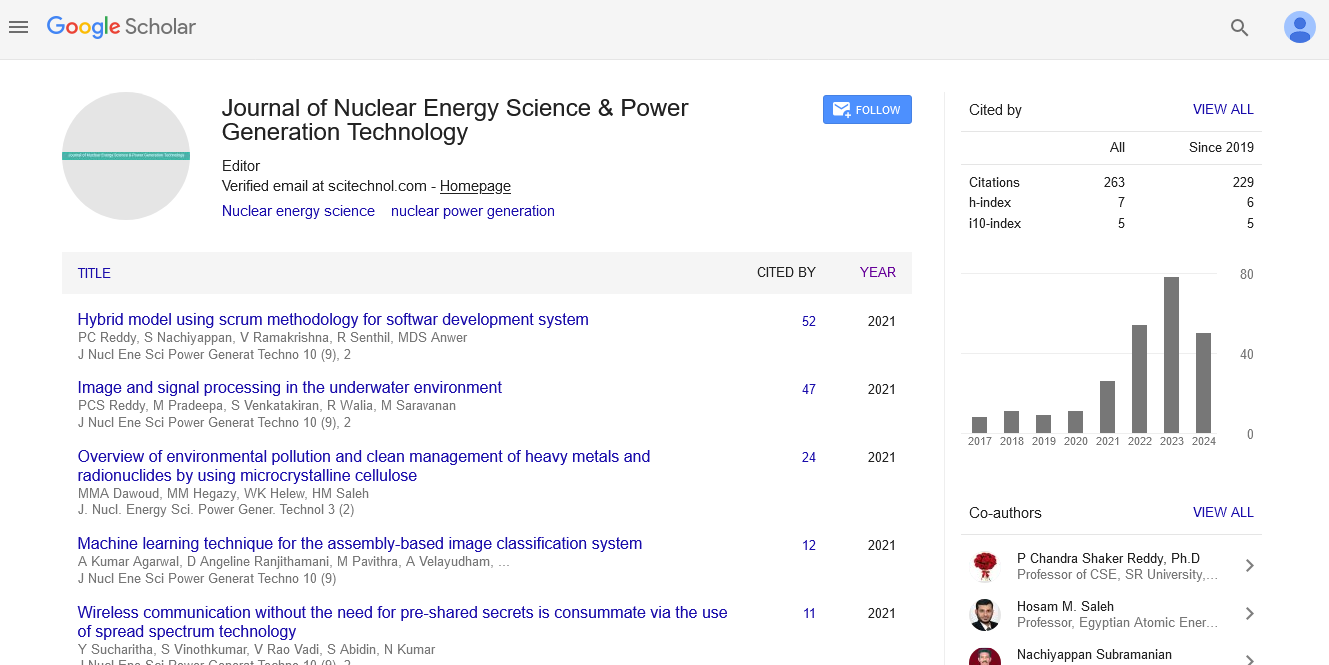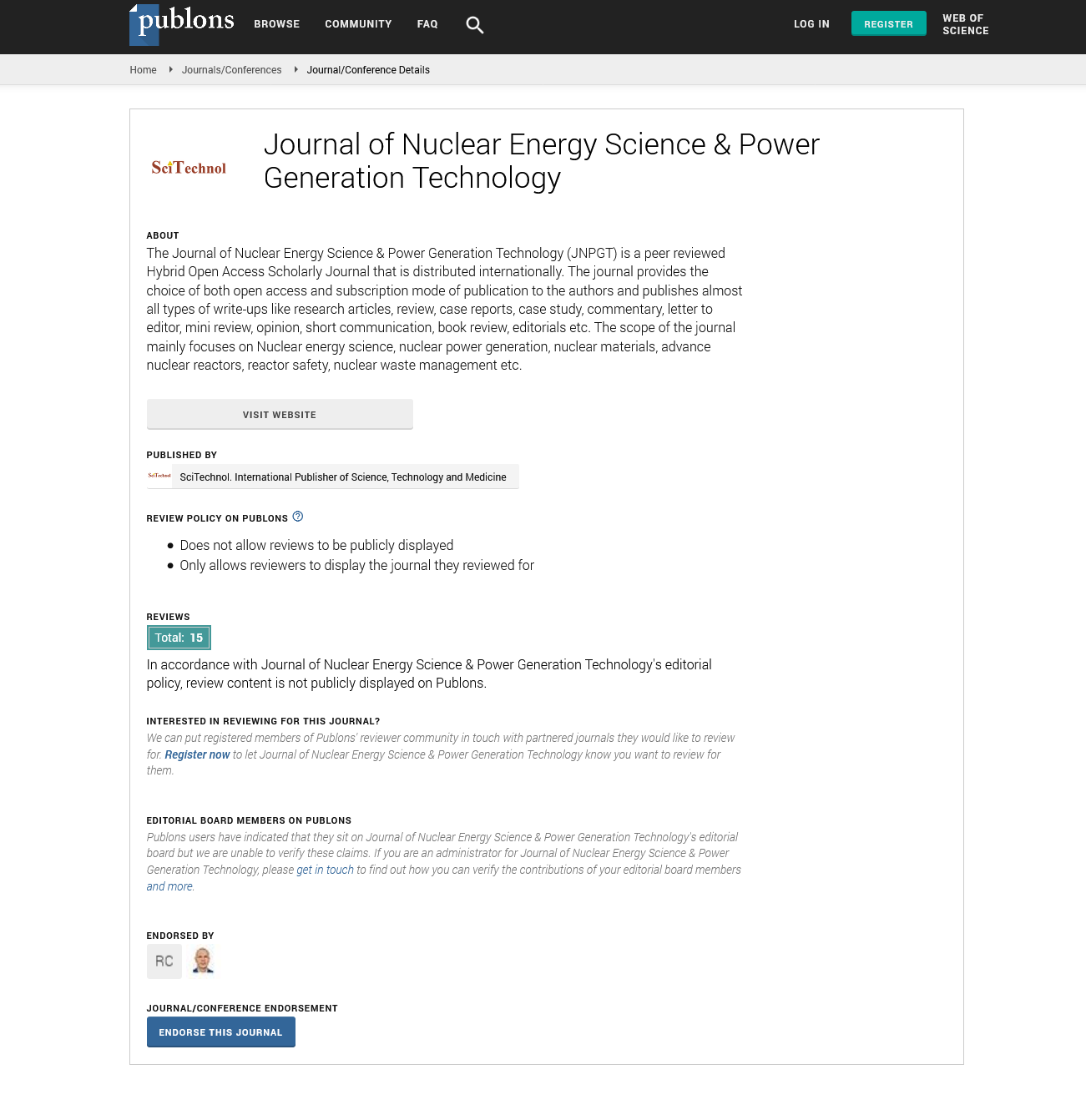The changing landscape of the PV industry: Past, Present and Future
Kok Thong Tan
Viridian Solar, UK
: J Nucl Ene Sci Power Generat Technol
Abstract
Solar photovoltaic (PV) has been hailed as one of the most promising sources of renewable energy, due to its cost competiveness, predictability, reliability and the endless supply of sun energy. The LCOE (levelized cost of electricity) of solar PV in certain parts of the world has outperformed the fossil fuel power generation; this makes the widespread adoption of solar PV as the future power source one step closer to reality. To begin with, this presentation is to explore the changing landscape of the PV industry in the UK. No doubt the PV deployment has been impressive in the last eight years, the total installed capacity has increased from literally ground zero to 13GWP, propelling the UK to one of the best PV markets in Europe. There have been some learning points as the PV industry has gone through the growth curve, many of which are not unique, and yet are repeatedly manifested in other markets. The PV industry is, in fact, interconnected in a global way where the future challenges are not merely restricted to technical issues only, but commercial, operational and political ones also. As solar PV is deemed to become the future source of energy in the not too distant future, what will be the environmental cost involved in the manufacturing and installation processes? This presentation also explores the harmful impact of the appalling practice of some irresponsible manufacturers, and discusses the pollution controls implemented by the global community since then to combat the pollution issues. It examines the current practice of dealing with end-of-life recycling for PV modules—are they adequate to prevent improper disposal of potentially harmful materials? Finally, the presentation concludes with identifying some opportunities for the PV industry to move towards a sustainable, subsidy-free, and grid-parity future.
Recent Publications:
1. Tan KT (2017) How to predict the future price of PV. PV-tech. London, UK, June 2017.
2. Tan KT (2017) What is a PERC solar cell? Solarblogger.net, Cambridge, UK, April 2017.
3. Tan KT (2016) Thin film solar PV Vs Silicon Wafer – Which is Better? Solarblogger.net, Cambridge, UK, October 2016
4. Tan KT, Gunawan A, Hiralal P, et al (2014) The effect of building integration on the temperature and performance of photovoltaic modules, PVSC 2014 IEEE 40th, Denvor, US, June 2014.
5. Tan KT, Bligh T (1998) A new approach to an integrated CAD model for surface ship design, Naval Engineers Journal, Washington DC, US, Jan 1998.
Biography
Kok Thong Tan is the Technical Director at Viridian Solar, a UK company based in Cambridge with their renowned innovative Clearline Fusion products. For over a decade, he has been devoting his professional life in developing products and technologies for the renewable sector. He started working with solar thermals well before the PV became a mainstream renewable solution. As a Chartered Engineer, he specializes in Solar Technologies with a particular interest in roof-integrated systems, advanced cell technologies and innovative mounting solutions. He is a member of the Industrial Advisory Panel of the Centre for Doctoral Training in New and Sustainable PV, and a member of the GEL/82 Standards Policy and Strategy Committee for PV Systems at British Standards Institution. He is also the Chair of the MCS (Microgeneration Certification Scheme) Solar PV Technical Working Group—a technical committee that develops a set of standards for the general practice of PV installations in the UK. He graduated with an Engineering PhD from the University of Cambridge.
E-mail: kt.tan@viridiansolar.co.uk
 Spanish
Spanish  Chinese
Chinese  Russian
Russian  German
German  French
French  Japanese
Japanese  Portuguese
Portuguese  Hindi
Hindi 

